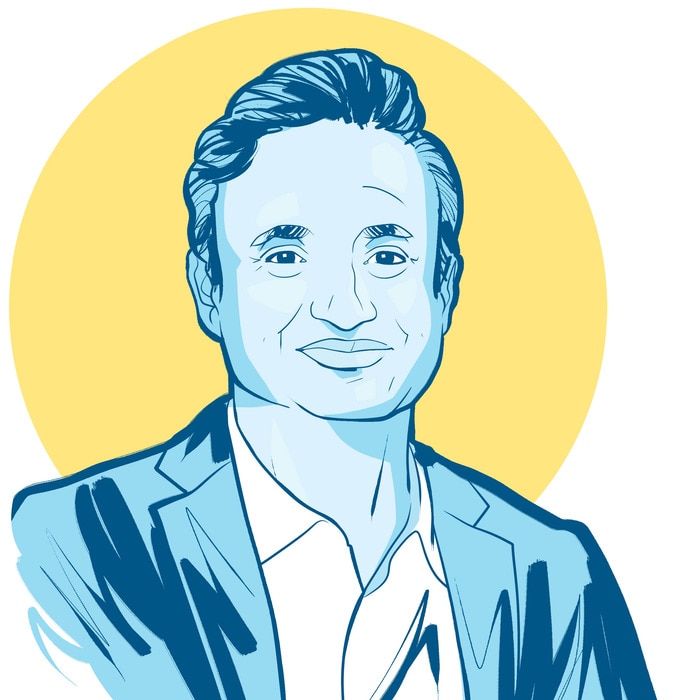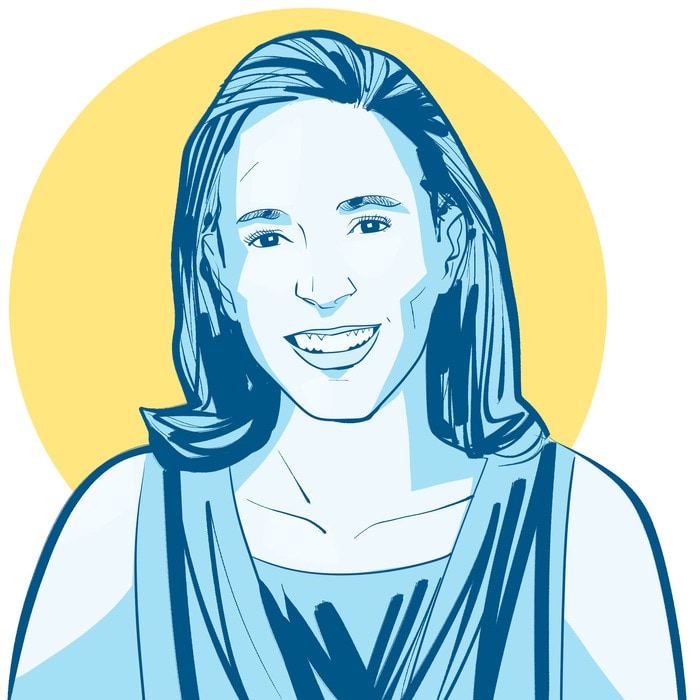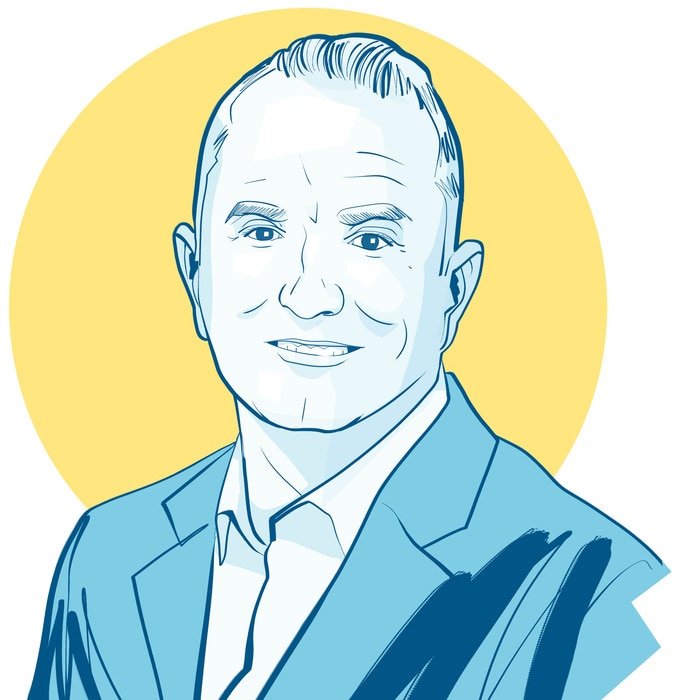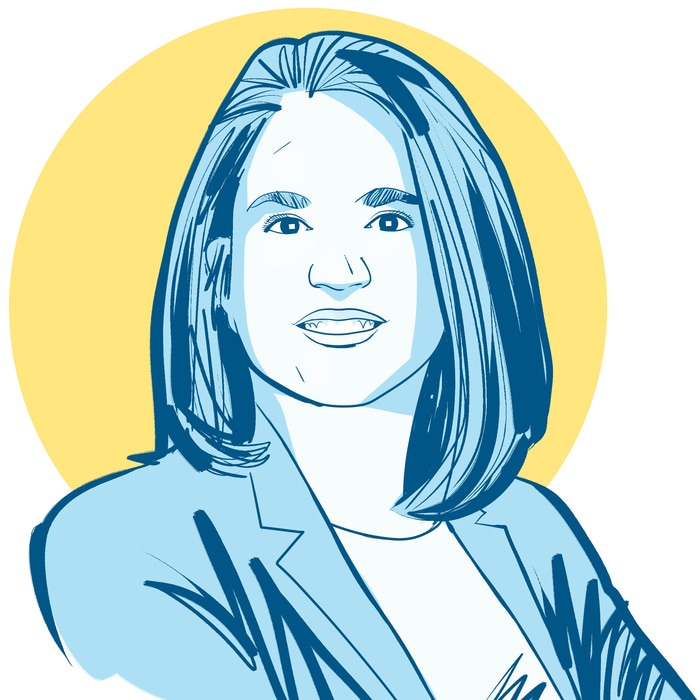Everyday challenges inspire cutting-edge technological solutions has been saved

Perspectives
Everyday challenges inspire cutting-edge technological solutions
The services we often take for granted can be groundbreaking laboratories for innovation.
It has been another unprecedented year. The pace of technological innovation has hit warp-speed: AI-powered virtual reality experiences are pushing the boundaries of entertainment and education; meanwhile, we discover new drugs and decrypt spy codes with the power of quantum computing.
But as extraordinary as these developments are, their flashiest uses—the ones that grab the most headlines—are actually quite niche. The average American doesn't have much practical use for cutting-edge virtual reality experiences or quantum codebreakers. Which is why some of the most exciting applications for cutting-edge technology in 2023 lie in the unexpectedly ordinary—and that’s exactly where two organizations are leaning in.
In collaboration with Deloitte, Exelon and Covered California are using transformative technologies to improve how they deliver essential services to millions of people across the United States. From helping individuals find health insurance to keeping whole cities connected to the power grid, cutting-edge technologies are driving the stories of the unsung innovators who are bringing new ideas to deep-rooted enterprises.
“Unexpectedness doesn’t always mean your company pivoting to accommodate a shifting market—sometimes it means proactively providing unexpected experiences for your consumers. From highly visible initiatives like a new and intuitive UX design, to easily-overlooked surprises like advance infrastructure monitoring, any organization can surprise its audience just as much as its audience can surprise it.”
Endless possibilities: Keeping the lights on with synthetic data
Exelon, the country’s largest publicly traded utility company, is exploring the power of synthetic data to keep households across the Mid-Atlantic and Midwest powered up.
Exelon operates six subsidiary utilities, which together serve millions of electric and natural gas customers across five states and Washington, D.C. Its oldest, Baltimore Gas and Electric (BGE), was founded in 1816. The age and scope of this infrastructure—gas lines, electrical substations, etc.—means regular maintenance and swift resolution of issues are top priorities. After all, one of the busiest, most densely populated regional corridors in the U.S. relies on Exelon’s services to keep businesses open and critical services online.
In recognition of this ongoing need, Exelon introduced drone technology to inspect assets in the field, checking for cross-arm breaks, cracks, decay, and other problems that could impact services. But imaging such a large number of field assets—especially ones that are hard to reach—was only half the battle: Someone, somewhere, still needed to analyze the near-constant stream of images and label them accordingly. It was a time-consuming task involving dozens of experts and countless hours.
Ankush Agarwal, Exelon’s Director of Infrastructure and Safety Analytics, along with his team of data scientist and quant engineers knew there was a better way. Tapping into innovation, engineering, inspection, and operations talent from BGE and across Exelon’s subsidiaries, his team implemented defect detection computer vision (AI) models—powered by image recognition technology—that could scan drone-captured images for cracks and other broken parts and identify issues for remediation faster.

Ankush Agarwal
Exelon’s Director of Infrastructure and Safety Analytics
To power the drones, Exelon initially trained the model on existing defect images the organization had on hand. But Agarwal and his colleagues soon realized that such images were scarce for some critical assets, and time-consuming to find, label, and annotate. In some coverage areas, they didn't have enough of them to efficiently train the models and account for all the possible ways a defect could present itself in the wild.
Exelon turned to Deloitte for guidance on closing gaps around missing or substandard asset imagery. Deloitte brought in NVIDIA, a standard bearer in the AI and 3D modeling space, to create a series of base asset models which could be iteratively tailored to reflect a variety of field conditions.
Once base models were input into NVIDIA’s Omniverse Replicator, Deloitte was able to generate hundreds of thousands of physically accurate synthetic images using 3D models of assets, displaying iterations of defects in a variety of environmental conditions. Replicator is a core extension of the Omniverse development platform, which enables teams to build custom SDG workflows and applications based on Universal Scene Description (OpenUSD) tools.
“Domain randomization is at the heart of synthetic data generation,” says Katja Reitemeyer, Director of Industry Partnerships for NVIDIA. “You can manipulate location, color, texture, and lighting to create a breadth of diversity in your training data that would be nearly impossible to capture with real data.”
These annotated 2D images were then fed into Exelon’s detection model as synthetic data, complementing the real-world data collected byBGE’s drones and employees in the field. The result: improved defect detection algorithms capable of identifying cracks, and wear and tear of different shapes and sizes—before they become the cause of city-wide blackout proportions.
According to Agarwal, Exelon is already seeing dividends on this investment in synthetic data, and the project was recently recognized with a Top Innovator Award in Grid Ops by Public Utility Fortnightly Magazine. “It significantly helped us to improve our data defection model,” he says, noting a 67% uplift in model performance.
Exelon and its six subsidiaries’ core commitment to keeping the lights on for millions of customers was upheld with the help of Deloitte and NVIDIA, which saw Exelon’s foray into synthetic data generation as an exciting frontier for the application of 3D-powered AI development, and as a real opportunity to improve the delivery of critical services on which so many rely.

Katja Reitmeyer
Director of Industry Partnerships for NVIDIA
“It does take a special project to bring all of these people together,” Agarwal says.
From moonshot to cloudshot: Revamping California’s ACA insurance exchange
In 2010, President Barack Obama signed the Patient Protection and Affordable Care Act (ACA) into law, making free and subsidized health insurance available to all Americans in need. All 50 states had nine months to comply with this
revolutionary new law—and from those early days sprang Covered California, the largest state-based health insurance marketplace in the country.
By the end of the first open enrollment period in 2014, more than 1.4 million Californians had signed up for health insurance plans offered by Covered California. They did so through the California Healthcare Eligibility, Enrollment, and Retention System (CalHEERS)—sponsored by Covered California and the California Department of Health Care Services (DHCS). This platform enabled Californians to apply for coverage, determine their eligibility for financial help, research and compare plans, and ultimately enroll.
Fast forward to 2019, Covered California sought the support of a system integrator capable of innovatively updating the CalHEERS platform to improve the consumer experience and handle the increasing volume of enrollments the system processed every year. Deloitte applied its experience helping several state-based marketplaces to modernize platforms and widen access. This experience led to Deloitte being chosen as the system integrator for CalHEERS. Together, Deloitte and several California agencies—including the CalHHS Office of Technology and Solutions Integration, DHCS, and Covered California—achieved similar success with CalHEERS, transitioning it from a limited, on-premise hardware system to a cloud-based solution.

Kevin Cornish
Chief Information Officer at Covered California
Powered by the near-limitless scalability of its cloud implementation, CalHEERS could handle a significantly larger traffic and transaction load—something that would prove vital as COVID-19 hit the U.S. The Families First Coronavirus Response Act included a continuous coverage provision preventing states from terminating Medicaid coverage during this public health emergency. Millions of Californians retained their Medi-Cal (California’s Medicaid program) coverage for the duration of the public health emergency, but with the restart of annual eligibility determinations earlier this year, between two and three million of those may roll off Medi-Cal coverage and potentially opt into subsidized health insurance plans through Covered California. The CalHEERS platform stands ready to help this unprecedented number of enrollees find health insurance coverage that works for them.
Moving to the cloud also had the added benefit of addressing a major, perennial challenge for CalHEERS. Kevin Cornish, Chief Information Officer at Covered California, shared that approximately 70% of CalHEERS transactions occur during their annual open enrollment period, which begins in November and runs through the end of January.
Before migrating CalHEERS to the cloud, the realities of on-premises resourcing meant Cornish’s team needed to fully resource the platform, 365 days a year, at a level that could handle the massive transaction load of the 90-day, high-volume open enrollment period. “Then, for the rest of the year, those expensive resources were underutilized,” Cornish said. By transitioning CalHEERS to the cloud, the agency could cost-effectively scale resources based on demand throughout the year.
This was all in keeping with Deloitte’s mandate to support CalHEERS’ innovation, says Kunal Shah, principal at Deloitte: “We focused on building a modern CalHEERS platform that can serve California’s health and human services programs for the future. With the limitless computational power and storage provided by the cloud, California has a strong foundation to explore how the latest technology innovations like generative AI could further benefit their marketplace.”
It’s a strategy that’s been a model for a government agency platform. Indeed, Cornish says private-sector platforms like Intuit’s TurboTax were some of the inspirations for the UX/UI and overall improvement of consumer experience with the new CalHEERS. It was a labor born of several years of collaboration with Deloitte that focused intensely on how human-centered design can improve the user experience in a public service context.
According to Cornish, CalHEERS currently evaluates eligibility for affordable health insurance of nearly 18 million Californians, with most enrolling in low- or no-cost coverage through Medi-Cal and roughly 1.7 million people signing up for insurance coverage through private plans offered by Covered California. Thanks to the CalHEERS application portal, nearly nine out of ten enrollees benefit from government subsidies, with many receiving coverage at no monthly premium cost.
For Cornish and the rest of the team at Covered California, including Executive Director Jessica Altman, this kind of competitive self-improvement doesn’t exist for vanity’s sake. Technological advancements to CalHEERS, and the contributions of those making them happen, are trained unwaveringly on a North Star: providing access to affordable, high-quality health care to as many Californians in need as possible.

Jessica Altman
Executive Director
“We are making an enormous difference in people’s lives,” says Altman. “It’s why we’re all so proud to work within this organization and support its mission.”
Mission-driven innovation
The true power of cutting-edge technology lies in its ability to improve the lives of everyday Americans—often by means we take for granted or can’t see on a daily basis. Many don’t realize the security and peace of mind health insurance provides until they become sick or injured. We rarely think about our reliance on electricity until we’re in an outage.
But the efforts of Covered California, Exelon, NVIDIA, and Deloitte show that some of our brightest minds are hard at work, day in and day out, devising unexpectedly sophisticated technical solutions to ordinary, albeit universal, challenges. And while their innovations may not get the splashy fanfare of virtual reality experiences, their labors are perhaps rewarded with something better: the knowledge that millions of people have the security of affordable health care coverage.

Engineered for the Unexpected
Relying on evolutions of what worked last year isn’t enough. Companies now need unexpected teams, technologies and ambitions to build modern strategies—and empower tomorrow’s positive futures.
Recommendations
Deloitte and NVIDIA Alliance
Solving tomorrow’s challenges by accelerating AI innovation


